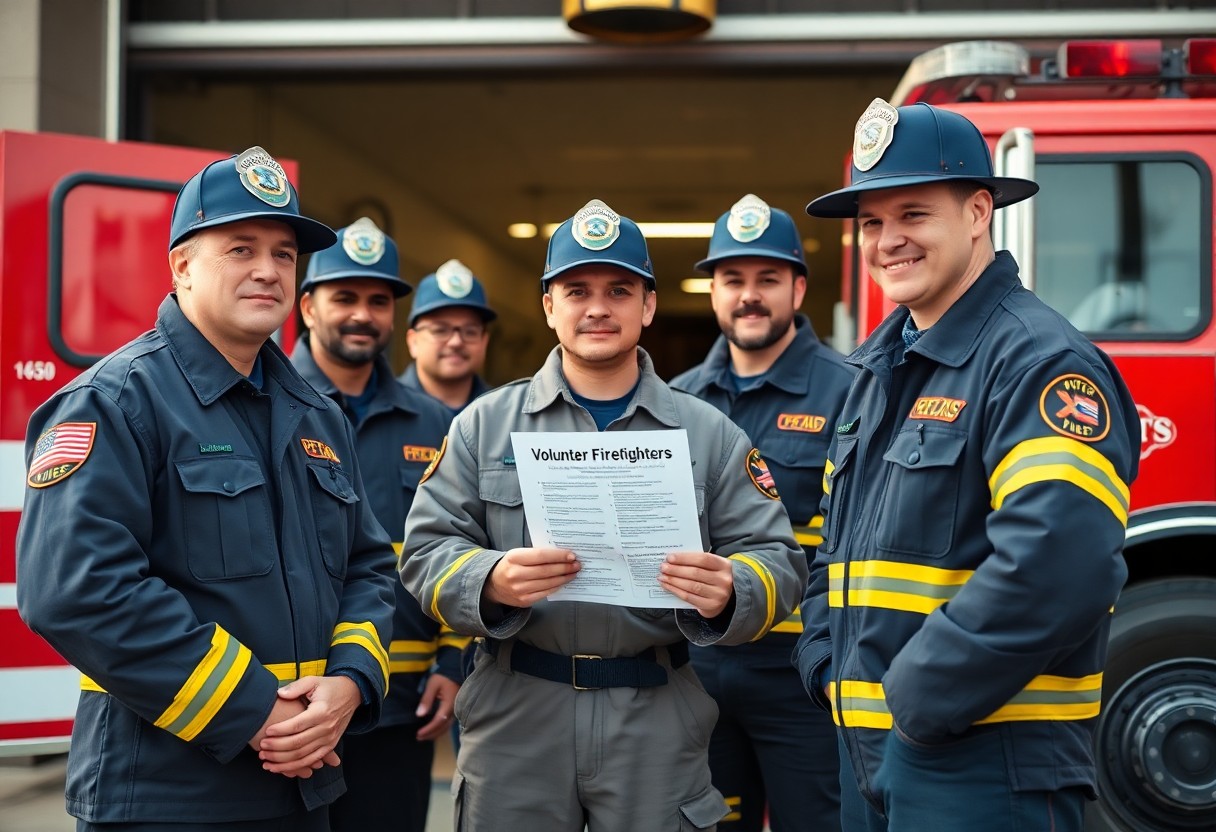With the increasing need for dedicated volunteers in your fire department, developing a referral program can empower your current volunteers to bring in new candidates. This initiative not only taps into your volunteer base for potential recruits but also strengthens community ties by encouraging passionate individuals to join your team. By creating a structured approach for referrals, you can enhance recruitment efforts and ensure that the new members align with your department’s values and dedication to service.
Understanding the Importance of a Referral Program
The implementation of a referral program within your volunteer fire department can significantly enhance recruitment efforts. By empowering your current volunteers to recommend potential candidates, you create a sense of ownership and engagement among the team. This not only helps you attract qualified individuals who are likely to align with the values of your department but also fosters a culture of inclusivity and camaraderie, as existing members play an active role in expanding the team.
Benefits for the Volunteer Fire Department
Around your fire department, a referral program can streamline the recruitment process by attracting volunteers who are already endorsed by trusted team members. This often leads to higher retention rates, as recommended candidates may have a better understanding of the department’s culture and expectations. Furthermore, you may find that your current volunteers feel more invested in the department’s success, as they have a direct role in shaping its future.
Strengthening Community Engagement
Volunteer fire departments thrive on strong community ties, and a referral program fosters deeper connections between your team and the community. When volunteers actively participate in recruiting new members, they become ambassadors for the department. This initiative not only enhances your visibility but also encourages community members to engage with your department’s missions and values.
Further, by facilitating a referral program, you create an environment where your current volunteers feel valued and appreciated. Their involvement in bringing in new members provides a platform for them to share their experiences and insights. This not only enriches the department’s culture but also prompts community discussions about fire safety and service. As your volunteers share their passion, it invites more community engagement and strengthens the overall bond between your fire department and those you serve, promoting a collaborative spirit that benefits everyone.
Designing an Effective Referral Program
It’s vital to create a structured referral program that encourages your current volunteers to participate actively. By providing clear guidelines and support, you can amplify the outreach of your fire department and ensure a steady influx of qualified candidates. Your program should be easy to understand and implement, ultimately fostering a community that values collaboration and commitment.
Criteria for Recommending Candidates
Below are the key criteria you should establish for volunteers when recommending candidates. Focus on attributes such as reliability, teamwork, and a willingness to learn. Ensure candidates have a genuine interest in serving the community and are physically fit for the demands of volunteer firefighting. Specifying these qualities will help your volunteers identify the most suitable individuals to recommend.
Program Structure and Incentives
Program participation can be greatly enhanced by incorporating rewarding incentives for your volunteers. Consider creating a tiered reward system, where volunteers earn points for each successful referral that leads to a new recruit. These points can be redeemed for various rewards, such as personalized gear, special recognition at events, or vouchers for local businesses. By tying tangible benefits to the referral process, you create motivation for your volunteers to actively engage in recruiting new members.
Program structure should also include regular updates on the progress of referrals, enabling your volunteers to track their contributions and stay engaged. Establishing a visible leaderboard or recognition system can foster a sense of competition among your volunteers, further driving their enthusiasm to recruit. Additionally, hosting events where volunteers can share their experiences, like recruitment workshops, will create a supportive atmosphere. By consistently communicating the impact of successful referrals on your fire department and the community, you can keep your volunteers motivated and dedicated to the program.
Communicating the Program to Current Volunteers
Now that you’ve established a referral program, it’s time to communicate it effectively to your current volunteers. Clear and transparent communication will help them understand the benefits of the program and how they can participate. Hold an informational meeting or send out an email detailing the program, including guidelines on how to recommend candidates. Ensure that you create an engaging narrative around the program to encourage volunteers to take action and contribute their networks to expand your fire department’s reach.
Strategies for Outreach and Awareness
Strategies for outreach should encompass various methods to engage all your volunteers. Utilize face-to-face meetings, newsletters, and social media platforms to reinforce the importance of the referral program. Encourage your volunteers to discuss the program with their peers and highlight success stories of past recruits that can motivate them. Periodic reminders and updates will also keep the program fresh in their minds, increasing participation.
Tools for Effective Communication
Between written communication, verbal presentations, and digital platforms, you have a range of tools at your disposal to effectively convey your new referral program. Leverage tools like emails, social media posts, and community boards to create buzz among your volunteers. Additionally, hosting workshops or group discussions can foster a collaborative environment where volunteers can share ideas and ask questions regarding the program. This multi-channel approach will ensure that your message reaches everyone effectively.
Tools like team collaboration software, group chats, and event management applications can further enhance your communication efforts. By using these tools, you can create dedicated channels for volunteers to discuss the referral program, ask questions, and provide feedback. Regular updates and shared resources will keep your volunteers informed and engaged. Consider also using surveys or polls to gauge interest and collect insights on potential candidates, creating a more interactive experience for your volunteers as they participate in the program.
Training and Support for New Candidates
To ensure a smooth transition into the volunteer fire department, it’s necessary to provide comprehensive training and support for new candidates. This includes equipping them with the necessary skills and knowledge to perform effectively in their roles. Ongoing support from experienced members can significantly enhance their confidence and capabilities, ultimately benefiting the entire team.
Onboarding Processes
Training begins the moment new candidates are welcomed into the volunteer fire department. A structured onboarding process introduces them to your organization’s values, policies, and critical procedures. This not only fosters a sense of belonging but also lays the groundwork for their development, ensuring they understand their responsibilities from the very start.
Mentorship Initiatives
Before new candidates take on active roles, establishing mentorship initiatives is vital for their growth and integration into the team. Pairing them with seasoned volunteers creates an opportunity for hands-on learning, where they can ask questions and receive practical advice.
And having a mentorship program in place amplifies the learning experience for new candidates. These mentors share their invaluable insights, offer encouragement, and assist in navigating challenges. This supportive relationship not only accelerates the learning curve but also fosters camaraderie within the department, creating a stronger, more cohesive team dynamic.
Measuring the Success of the Referral Program
For any referral program to thrive, you need to accurately measure its success. This involves tracking how many new volunteers join your fire department through referrals and understanding the overall impact on engagement and retention rates. Evaluation helps you identify trends and make necessary adjustments to enhance the program’s effectiveness. Regular analysis ensures that you not only recognize successful strategies but also improve areas that may be falling short.
Key Performance Indicators
Measuring the effectiveness of your referral program starts with clearly defined key performance indicators (KPIs). These metrics may include the number of referrals made, conversion rates of referred candidates who join, and overall volunteer satisfaction and engagement levels. Monitoring these indicators allows you to assess the program’s impact and make data-driven decisions to improve its mechanics and reach.
Feedback Mechanisms
To refine and enhance your referral program, establishing feedback mechanisms is imperative. These channels enable you to collect insights from your current volunteers—those actively participating in the program—as well as the new candidates who joined through referrals. Their perspectives help you understand what works well and what may need adjustment, creating a continuous cycle of improvement.
In addition to formal surveys, consider informal check-ins or suggestion boxes for volunteers to voice their opinions. Facilitating open dialogue encourages participants to share their experiences and ideas. You can utilize this feedback to promptly address any concerns, celebrate successes, and effectively adapt the program, ensuring it meets the needs and expectations of both current volunteers and potential recruits.
Addressing Challenges and Obstacles
Your referral program for the volunteer fire department might face several challenges, including potential resistance from current volunteers or a lack of awareness about the program. To successfully implement this initiative, it’s necessary to communicate the benefits clearly and create engaging platforms for volunteers to share their experiences. Encourage a culture of open dialogue to ensure any concerns about the referral process are addressed promptly.
Common Issues and Solutions
Across many organizations, common issues such as low participation rates or unclear guidelines can hinder your referral program’s effectiveness. To combat this, provide comprehensive training for volunteers on how to effectively recommend candidates. Additionally, consider regular reminders and incentives for successful referrals, fostering a community-driven atmosphere.
Adaptability and Continuous Improvement
Any program must evolve to stay relevant and effective. Gathering feedback from volunteers about their experiences with the referral process can help identify areas for improvement and streamline operations. This adaptability not only enhances your recruitment efforts but also builds a stronger sense of community among volunteers.
This feedback loop is necessary for the long-term success of your referral program. Regularly analyze the data from referrals, including the quality of candidates brought in and the experiences of both referrers and referees. Implementing changes based on this information will help ensure that your program remains engaging, efficient, and aligned with the needs of your volunteer fire department and its community.
Conclusion
As a reminder, developing a referral program allows you to tap into the networks of your current volunteers, enabling them to recommend new candidates for your fire department. This initiative not only strengthens your team with trusted individuals but also fosters a sense of community and ownership among your volunteers. By encouraging them to share their experiences and invite others to join, you can effectively enhance your recruitment efforts and ensure a committed and skilled volunteer crew ready to serve your community.



